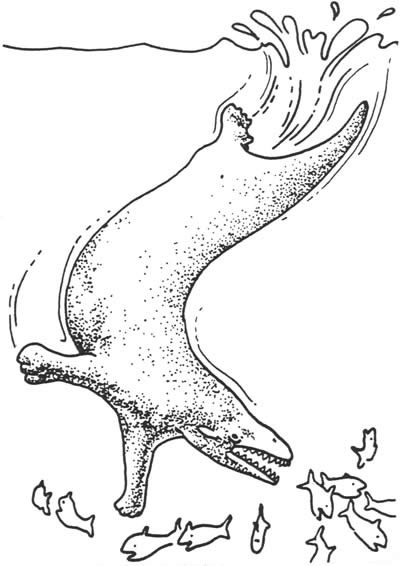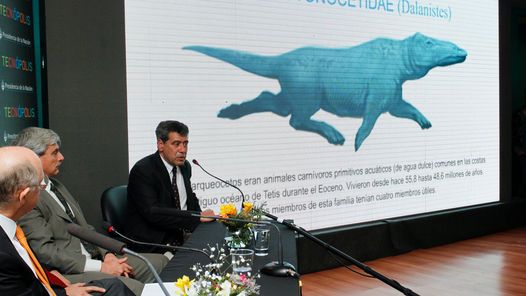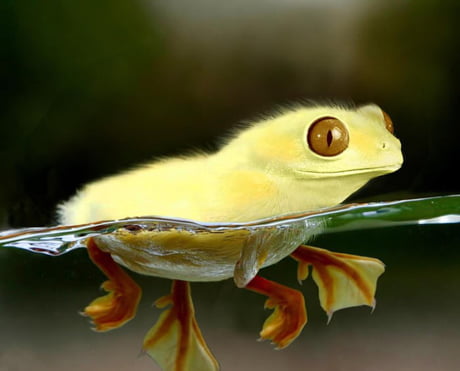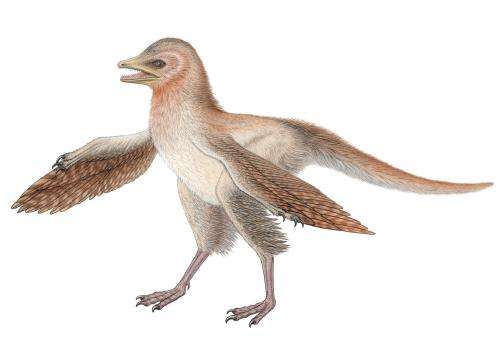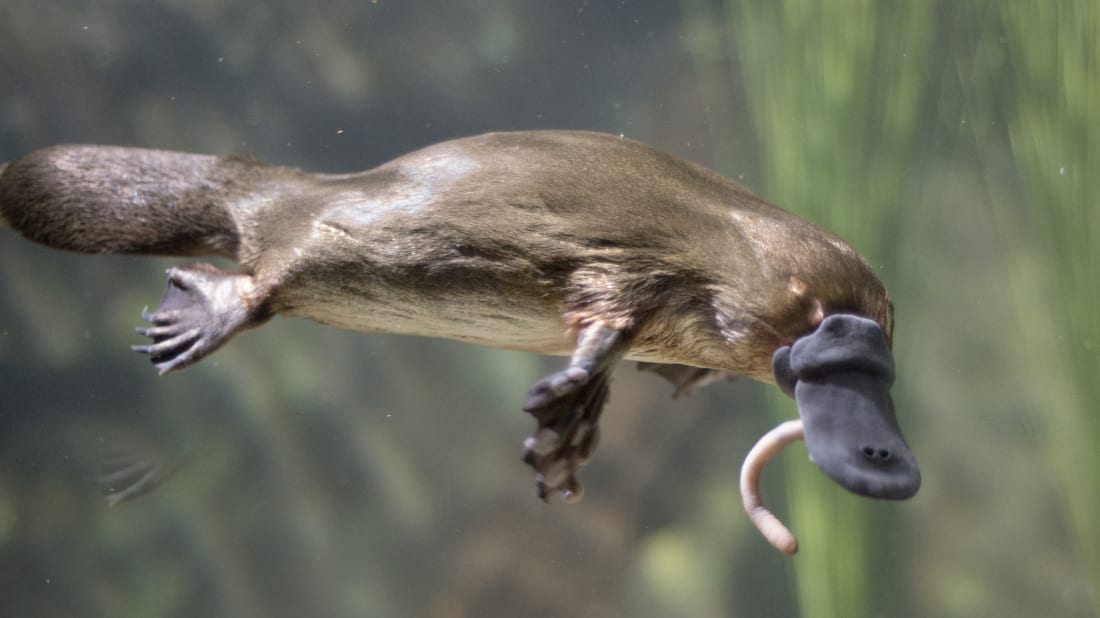Tracing the origin of the panda’s thumb
Ever since Gould’s seminal essay on the ‘panda’s thumb’ (Gould 1980; Gould and Vrba 1982), this structure has become one of the most famous examples to illustrate the contingent nature of evolution, as opposed to optimality of design.
The panda’s false thumb illustrates one of the Darwinian principles of historical inference, namely, that based on finding discordances (imperfections or oddities) between the anatomy of an organism and its current circumstances, which make no sense outside the evolutionary paradigm (Gould 2002). More recently, with the recognition that lesser pandas are only distantly related to giant pandas but also display an enlarged radial sesamoid involved in bamboo feeding activities, the false thumb of both pandas has acquired further significance as one of the most remarkable examples of convergent evolution (Antón et al. 2006; Salesa et al. 2006b). Given their similar grasping function during bamboo feeding and based on extant taxa alone, it might seem warranted to infer that the giant and lesser pandas’ hypertrophied radial sesamoids con-
stitute a remarkable case of convergent adaptation. However, the radial sesamoid is not employed as a truly opposable and freely movable thumb in either the giant or lesser panda (contra Davis 1964). In the former, the ‘false thumb’ constitutes a part of a double pincer-like, manipulative functional apparatus in which the hand flexes around the scapholunar and the unciform, so as to grasp objects between the true digits and both
the radial sesamoid and the pisiform (Endo et al. 1999a, b, 2001a; Antón et al. 2006). In contrast, the less marked hypertrophy of the radial sesamoid of the lesser panda, coupled with associated musculoskeletal differences, indicate the possession of a different grasping mechanism (Endo et al. 2001b, 2007; Antón et al. 2006; Salesa et al. 2006b; Abella et al. 2013a), more similar to that displayed by other small- to medium-sized carnivorans. In the latter taxa, these grasping abilities are employed not only in food manipulation but also in arboreal climbing behaviours along thin branches (Antónet al. 2006), given the lack in these taxa of the true thumb opposability characteristic of primates.
The simultaneous locomotor and manipulatory role of the radial sesamoid in ailurids casts some doubts on the adaptive origin of this structure. In fact, locomotion has been favoured as the original primary role of this structure, based on the information provided by the fossil record (Antón et al. 2006; Salesa et al. 2006b).
The remains of the extinct ailurid Simocyon batalleri from Spain traced the possession of a hypertrophied radial sesamoid in this group back to the Late Miocene, clearly prior to the acquisition of the extreme hebivorous adaptations of the extant Ai. fulgens (Salesa et al.2006b, 2008). This is confirmed by the common occurrence of this feature in younger members of the same lineage, even if not as well developed as in the Ailuridae (Wallace 2011). This fact indicates that, in ailurids, the large radial sesamoid originally had a primary locomotor role, probably related to climbing on thin branches (Antón et al. 2006; Salesa et al.2006b), having been subsequently co-opted to perform a manipulatory function and thus constituting an exaptation rather
than adaptation to bamboo feeding (Antón et al. 2006). In the giant panda lineage, the evolutionary origin of the false thumb is less well understood, and thus it is uncertain whether it should be considered an exaptation regarding its current role in bamboo feeding (Hutchinson et al. 2011), as in lesser pandas (Antón et al. 2006; Salesa et al. 2006a, b), or rather as an adaptation to food manipulation, as customarily thought (Wood-Jones 1939a, b; Davis 1964; Endo et al.1999b; Antón et al. 2006; Salesa et al. 2006b). The interpretation of the giant panda’s false thumb as an adaptation to...
Read on, if you like.
Panda's Thumb
In anatomy, a
sesamoid bone is a bone embedded within a tendon or a muscle. It is derived from the Latin word sesamum ("sesame seed"), due to the small size of most sesamoids. Often, these bones form in response to strain, or can be present as a normal variant. The kneecap is the largest sesamoid bone in the body. Sesamoids act like pulleys, providing a smooth surface for tendons to slide over, increasing the tendon's ability to transmit muscular forces.
The sesamoid is a small nodular bone most often present embedded in tendons in the region of the thumb. Calcification of sesamoid bone is one of the important features of pubertal growth spurt, which is earlier in females than in males. Absence of sesamoid bone indicates delay in reaching puberty.
Sesamoid bones can be found on joints throughout the body, including:
In the knee—the patella (within the quadriceps tendon). This is the largest sesamoid bone.
In the hand—two sesamoid bones are commonly found in the distal portions of the first metacarpal bone (within the tendons of adductor pollicis and flexor pollicis brevis). There is also commonly a sesamoid bone in distal portions of the second metacarpal bone.
In the wrist—The pisiform of the wrist is a sesamoid bone (within the tendon of flexor carpi ulnaris). It begins to ossify in children ages 9–12.
In the foot—the first metatarsal bone usually has two sesamoid bones at its connection to the big toe (both within the tendon of flexor hallucis brevis). One is found on the lateral side of the first metatarsal while the other is found on the medial side. In some people, only a single sesamoid is found on the first metatarsal bone.
In the neck—Although the hyoid bone is free-floating, it is not technically a sesamoid bone. All sesamoid bones form directly from the connective tissue found in tendons and ligaments. By contrast, the hyoid bone forms from a cartilaginous precursor like most other bones in the body.
In the ear—the lenticular process of the incus is a sesamoid bone and therefore is considered the fourth ossicle of the middle ear.
An
anatomical variation, anatomical variant, or anatomical variability is a difference between the anatomical structures of animals from the same species. The variations are seen as normal in the sense that they are found consistently among different individuals, are mostly without symptoms, and are termed anatomical variations rather than abnormalities. Some variations are found in different species such as polydactyly, having more than the usual number of digits.
Anatomical variations are mainly caused by genetics and may vary considerably between different populations. The rate of variation considerably differs between single organs, particularly in muscles. Knowledge of anatomical variations is important in order to distinguish them from pathological conditions.

